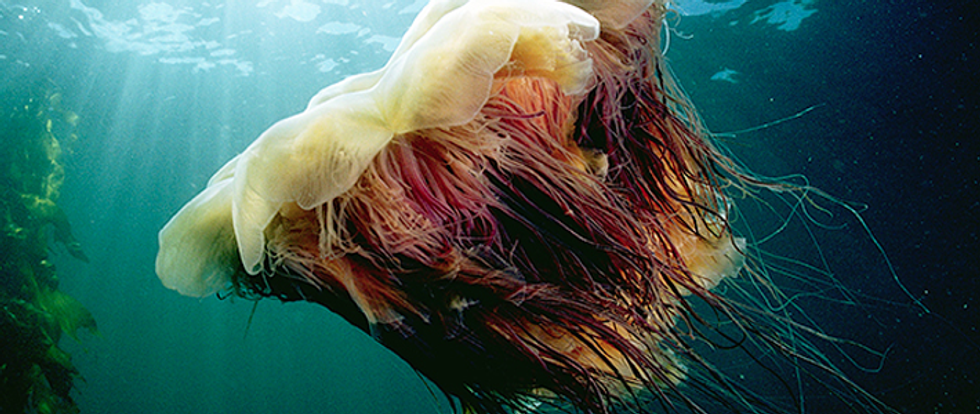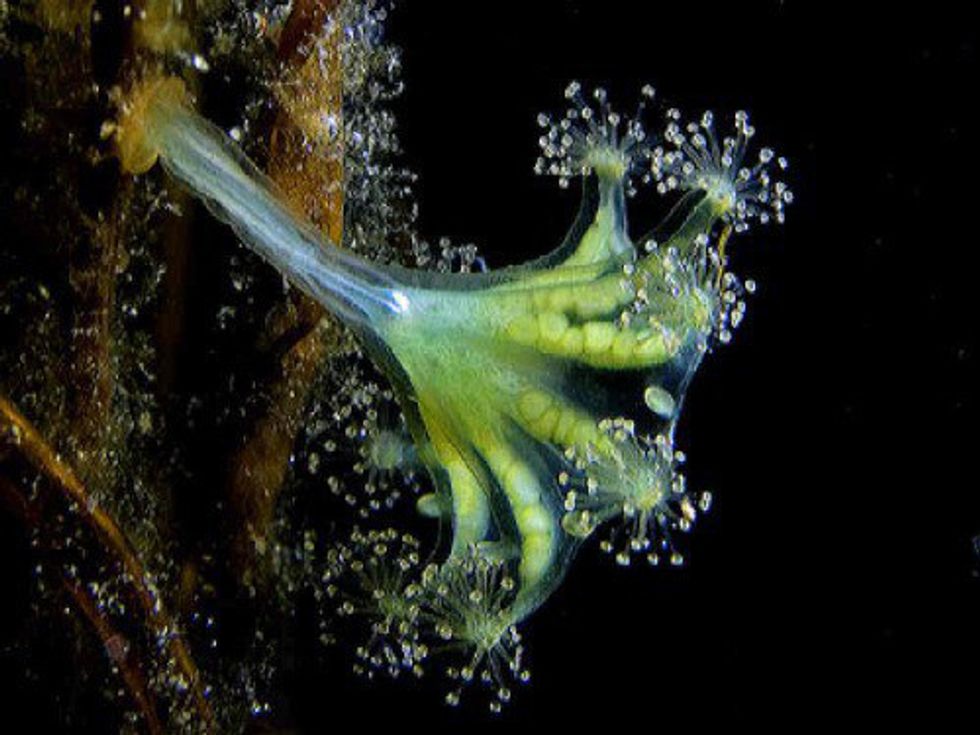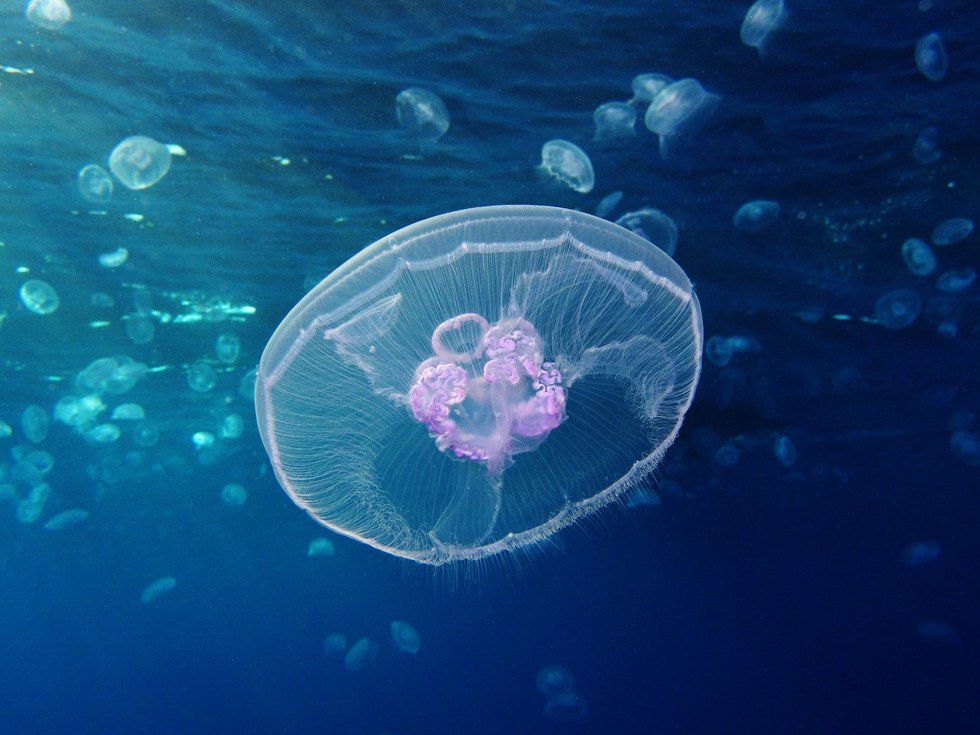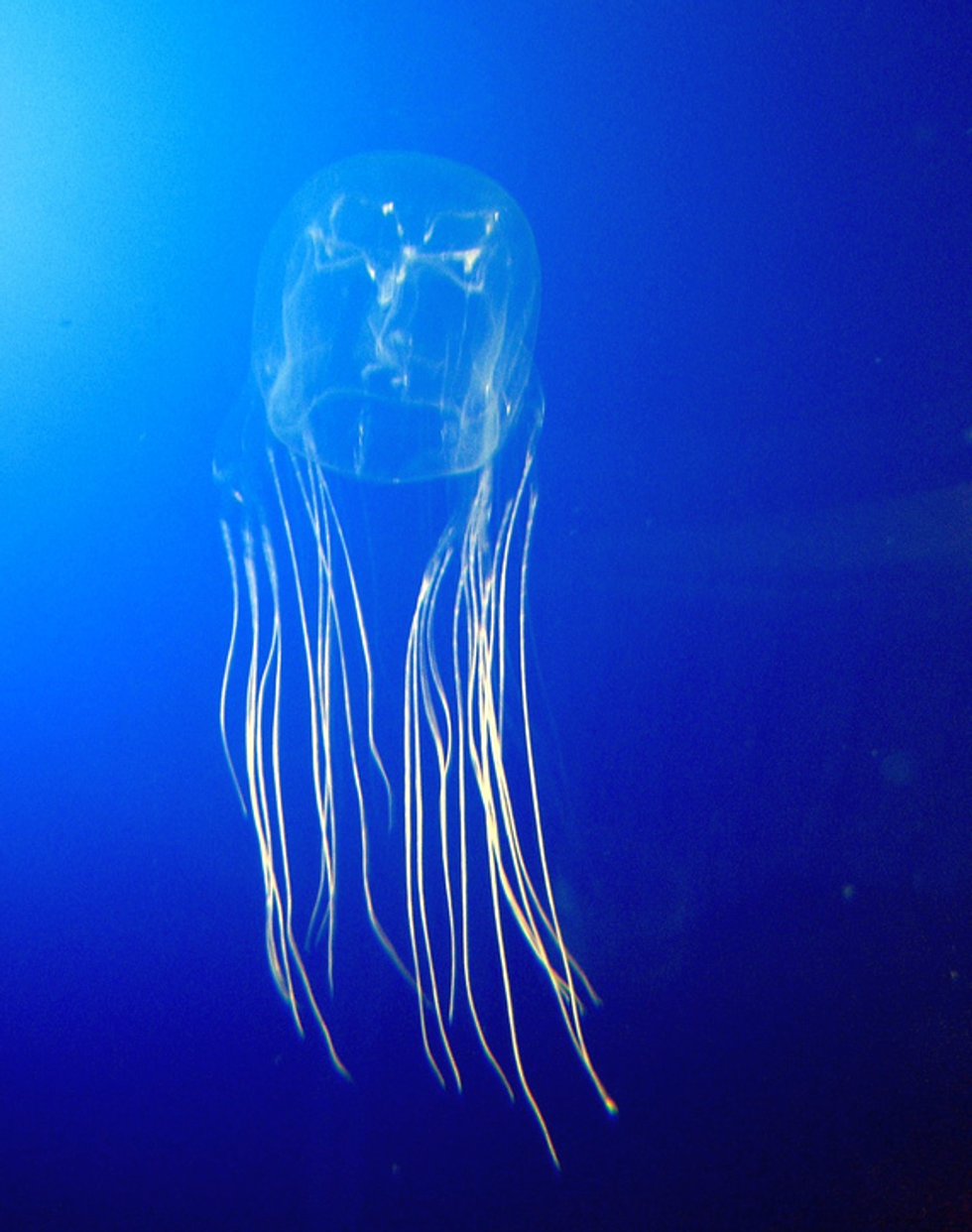Forget about H.P. Lovecraft’s Cthulhu, the giant squid from Hogwarts, or the great sea monsters of old. The real terror you will find beneath the waves are jellyfish. Endlessly diverse, bizarre, and mysterious: they are the stuff of nightmares.
The movie directors got it wrong when they decided to make horror movies about giant attacking sharks and huge octopi. Imagine instead watching a big gelatinous blob float menacingly toward someone before snatching them up with its tentacles and devouring them brutally. That would be a truly horrific movie, one that would keep you up at night and prevent you from swimming in dark water ever again. Would you like an example?
Meet the Lions Mane Jellyfish:
This is the largest species of jellyfish in existence, with some being measured at 120 feet long. Just to put that in perspective for you...that is 120 foot-long sandwiches laid end to end. I hope that perspective helped. You definitely would not be able to eat this jellyfish in one sitting. It would definitely be able to eat you in one sitting.
Now I won’t try to fool you—jellyfish are not actively predatory, so they're not out there hunting down unsuspecting swimmers and attacking them. However, not predatory does not mean not dangerous. Jellyfish, including the Lions Mane, have tentacles that can sting awfully and harm terribly, or even kill painfully.
So let us go back to the basics so that you are prepared to prevent death by jellyfish. What on Earth are jellyfish? Plant or animal? Do they have a brain? Are they even able to eat?
A jellyfish is indeed an animal, belonging to phylum Cnidaria, which are characterized by having cells that sting, as well as a swimming form and a non-swimming form. That’s weird. Don’t all jellfyish swim?
Nope! Stauromedusae live solely as a “polyp” and never develop to become free swimming bodies. This jellyfish is basically just a permanently immobile stinging animal:
Now, there's no way there is any room here to put a brain, right? Just look!
Well, you are exactly right. They do not have brains. Yes, it is true. The ocean is full of brainless, stinging, zombie “fish." Are you scared yet?
Indeed, jellyfish do not have a centralized nervous system and definitely do not have the organ that we would consider a brain. Instead, jellyfish have a much simpler net of nerves to control their movements and behavior.
And what, say you, do these squishy zombie sea creatures eat? Most species of jellyfish simply drag their tentacles behind them, stinging and paralyzing phytoplankton with their tentacles so they can then eat them. That is fairy harmless if you aren't phytoplankton.
Don't get too comfortable, though, because others will capture much larger animals - we’re talking large fish here!
Now let's get back to why jellyfish belong right alongside Jaws and Moby Dick. Everybody knows that we should be wary of their stingers, but we assume most jellyfish are mostly harmless.
...But then there is the “Sea Wasp," an admittedly beautiful jellyfish that has a particularly deadly sting.
Like most jellyfish, the Sea Wasp has stinging cells within its tentacles which are triggered upon contact with your skin. However, the difference is that this jellyfish's stinging cells release a toxin that will cause cardiac arrest with enough contact. And when I say enough, I mean just enough contact with their 10 foot long tentacles. And what I mean when I say 10 foot long tentacles, I mean that this is a beautifully deadly sea monster with extremely long lethal tentacles!
And there's only going to be more danger from jellyfish as time goes on. While jellyfish blooms are normal and expected, scientists around the world have been noticing they come more often and in larger numbers. The reason is complex but most suspect it is related to climate change.
Put two and two together now. Jellyfish can kill. They are brainless. Thoughtless. They are taking over the oceans. Prepare yourselves, for this is the true zombie apocalypse that humanity faces!























